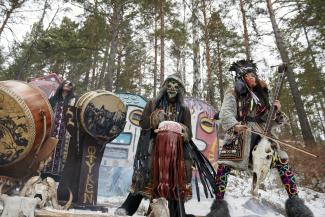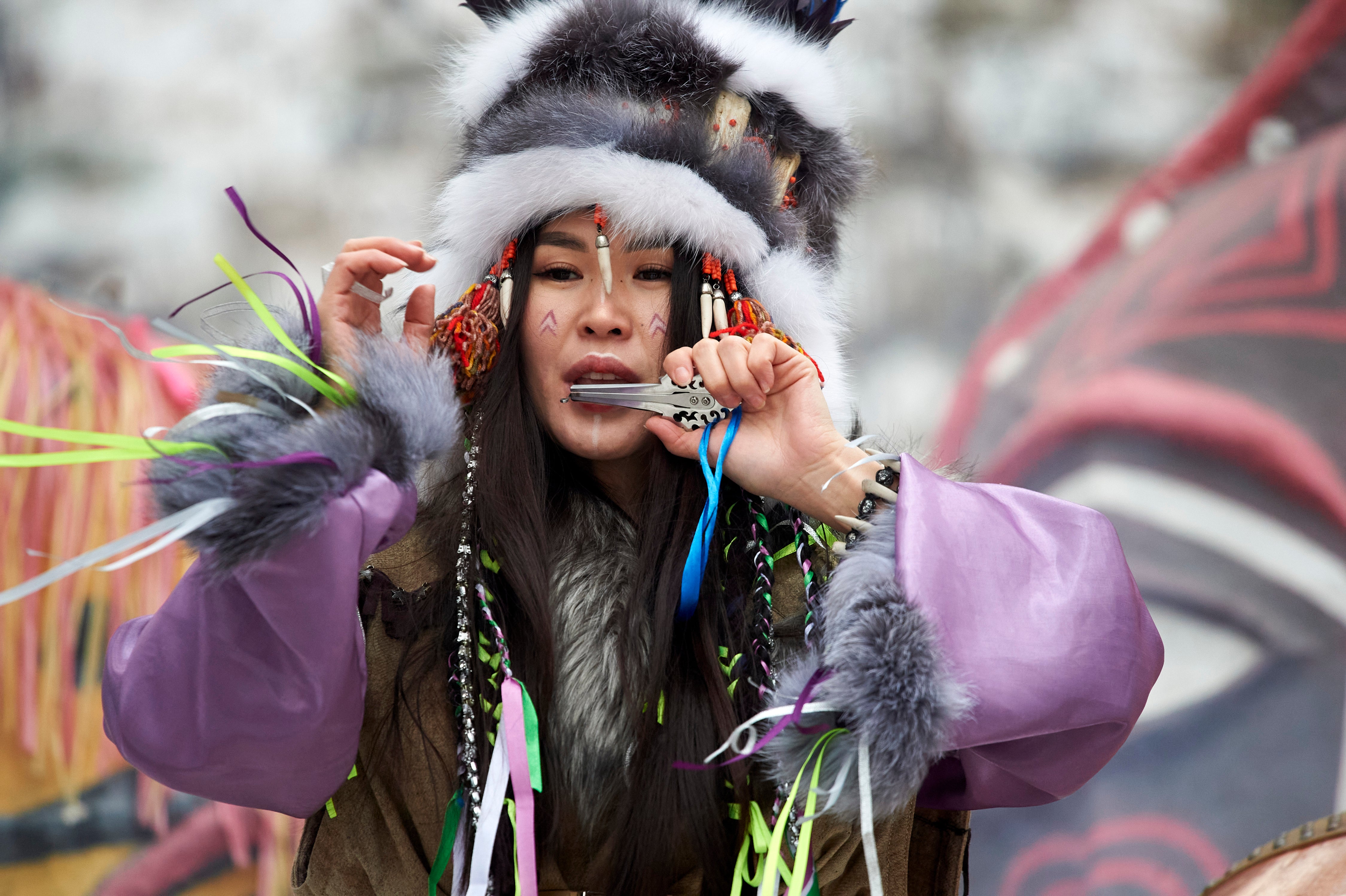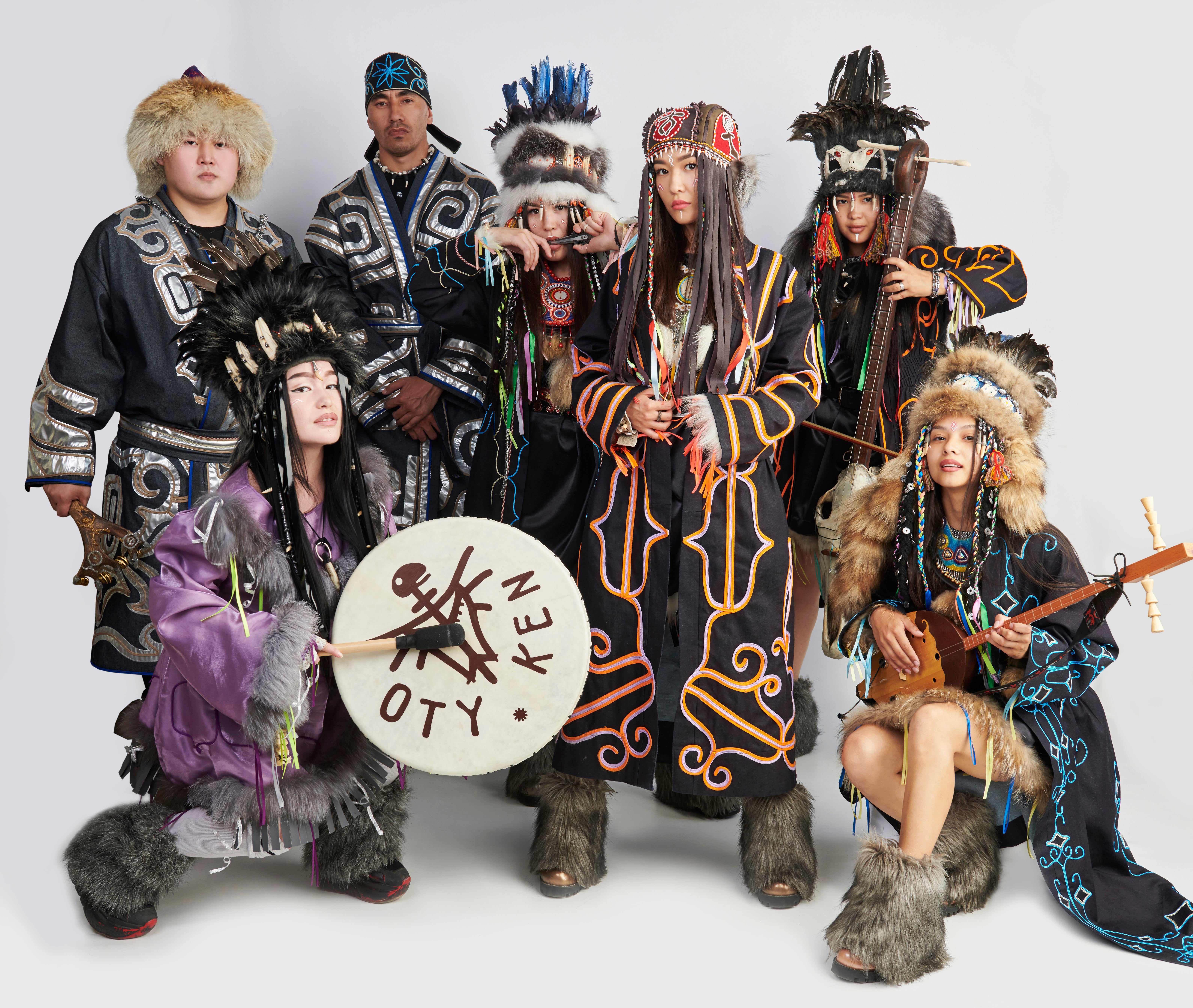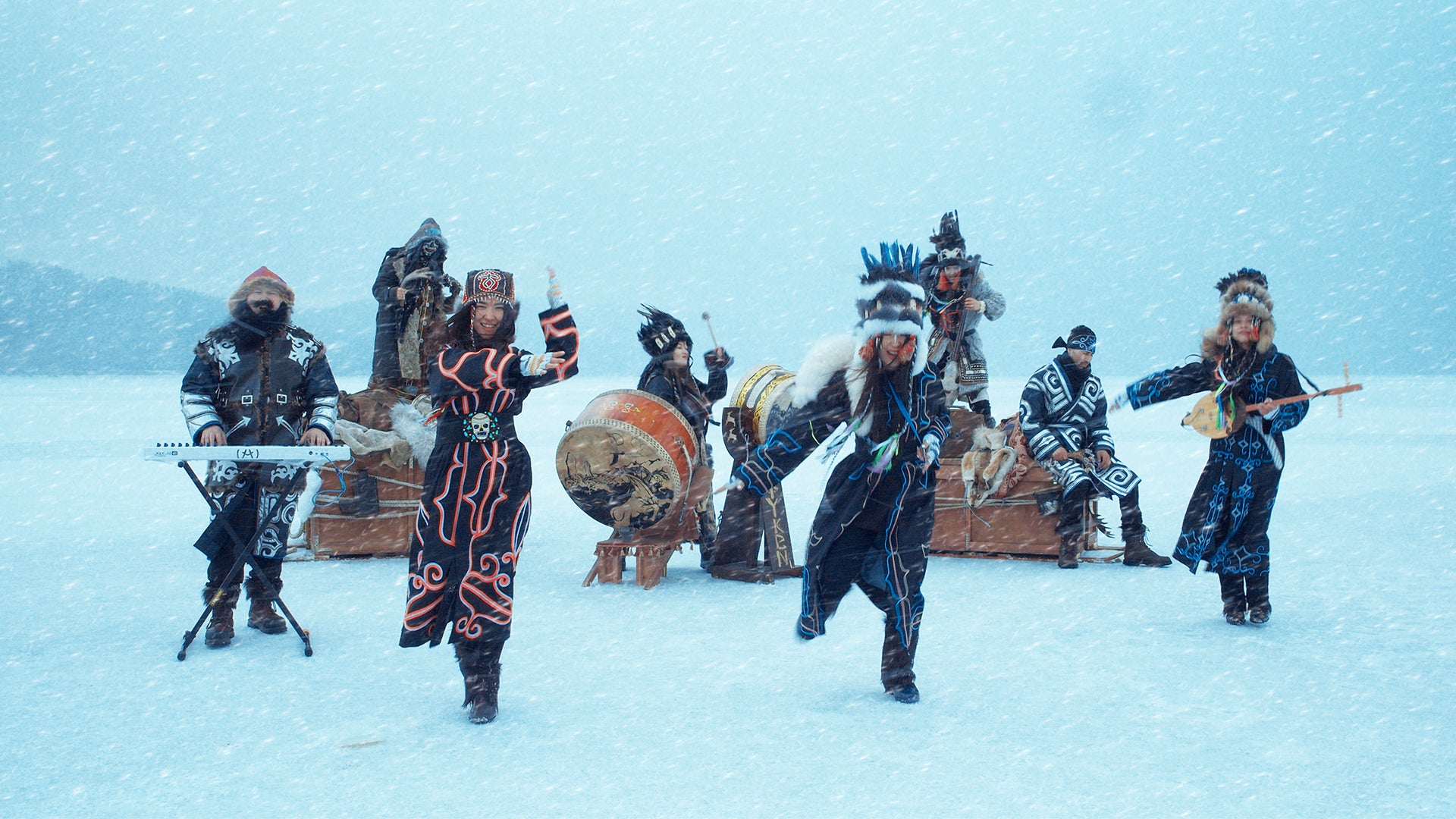
With its stunning natural beauty and formidable landscapes, Siberia has captivated and inspired people worldwide. The vast expanses of untamed wilderness and rugged terrain is home to a rich cultural tapestry of Indigenous Peoples. This is exemplified in the unique music of OTYKEN, a collective of Siberian Indigenous musicians who have taken the world by storm with their distinct blend of traditional and modern sounds.
OTYKEN began in 2017 after Andrey Medonos, Director of the Ethnographic Museum in Krasnoyarsk, was approached by tourists looking for traditional Siberian music performances. Medonos saw an opportunity to showcase the talents of Indigenous musicians and singers from the Taiga region and assembled a group of predominantly women artists. “This is our homeland and we try to put the pieces of Indigenous Peoples’ cultures into our music and share it with the rest of the world. Via our music people get to know about us, our culture and traditions,” OTYKEN says.
OTYKEN’s music transports listeners to an ancient and contemporary world, blending haunting melodies and rhythmic beats that speak to the heart and soul of Siberian Indigenous cultures. Each song features a variety of local musical instruments, including the vargan (jaw harp), khomys (a Khakas two-stringed instrument), Morin khuur (a two-stringed instrument played with a horsehair bow), and leather drums, among others. The musicians also incorporate throat singing, a style that produces multiple notes simultaneously creating a hypnotic and otherworldly sound. The collective’s unique music is deeply rooted in the traditions of the Khakassian, Chulyms, and other Indigenous cultures, and their songs are a testament to the perseverance of these communities. “Our songs and our whole essence is all about nature. We cannot live without this pure connection as we’ve grown up in Siberian villages near taiga and rivers. Our surroundings are something that we care [for] and respect,” OTYKEN says.
 Tsveta playing the jaw harp.
Tsveta playing the jaw harp.
Many Indigenous communities living in Siberia face isolation and marginalization. The use of critically endangered languages in OTYKEN’s music is a significant contribution to keeping Indigenous cultures thriving. “We sing our songs in Khakass, Chulym, and other Indigenous languages. In our opinion, this is what can revive the situation with our endangered languages,” OTYKEN says. The name OTYKEN derives from the Turkic word for “a sacred site where warriors laid down their arms and held talks.” Through their music, OTYKEN are committed to ensuring that the ethnic music and cultural traditions of Indigenous Peoples in Siberia are not lost to the past.
OTYKEN’s songs reflect the daily life and traditions of Indigenous Peoples. “The Lord of Honey” is inspired by the Chulym beekeeping expertise and their ancient method of extracting honey, which remains unchanged to this day. OTYKEN also sell wild honey on its website, which is preserved in its natural state through sealed glass and wood packaging. The group has also made instructional videos on how to collect and season wild honey, as well as instructions on how to paint with propolis. All profits from the sale of wild honey are directed toward the development of the OTYKEN collective.
Another of OTYKEN’s songs, “Storm,” garnered over 4 million views on YouTube within the first six months of its release. The music video and its visual aesthetic highlight the richness of their Khakassia and Chulym cultures. Set in the Krasnoyarsk Territory on the Chulym River, approximately 30 kilometers from the village of Pasechnoye, the capital of the Chulyms, this region holds significant cultural importance for the members of OTYKEN, as it is their birthplace. The band members are shown performing against a backdrop of rugged wilderness where the harsh, icy winds symbolize the resilience of the Indigenous Peoples who have inhabited the region for centuries. The song speaks to the challenges and difficulties faced by those who journey to the East, and the video is imbued with a sense of connection to the land.
As OTYKEN perform “Storm,” their traditional clothing, representative of many Indigenous Peoples of Siberia, pays homage to their people’s rich history and traditions. “It’s just like we revive them every time we sing our songs because it has always been in our hearts, and these traditions and stories will never die,” the group says. Among the array of musical instruments used in the music video, the morin khuur truly stands out for its distinct aesthetic of being made from a horse’s skull. This Mongolian string instrument is a testament to the resourcefulness and ingenuity of Indigenous Peoples, who have long used natural materials to create musical instruments.

OTYKEN celebrate the traditional roots of their music while experimenting with contemporary arrangements. Medonos, who is OTYKEN’s producer, helps strike a balance between R&B, ethnic rock, and tribal electronica. “We combine the traditions of the North, Siberia, and the Far East of Russia and modern industry trends. It is our producer, Andrey, who helps us to [frame] our narrative with [today’s] arrangements. There is a thin line where we cannot be misunderstood, so this is very important for us to present the authentic sound and context,” OTYKEN says.
Themes of nature, spirituality, and community are also important for OTYKEN, who value a close emotional connection to their fans: “Some of our songs have a truly magnificent effect on our listeners. The music touches many people, regardless of their nationality, location, and age. We get these messages sometimes on our social media, where people write to us, shedding their tears out and saying some moving things to us about the songs they heard. It’s the best reward for us to know that someone felt our song through them. Nothing can be compared to it.

This connection with fans has helped OTYKEN gain exposure on a global scale with performances at festivals like the Universiade, the Freestyle Wrestling World Championship, and the Grammy’s Global Spin in 2022, where their hit song “Legend” earned them a Grammy nomination. OTYKEN’s music has also been selected to be sent to the moon as part of the Lunar Codex project. The technology used to digitize their music will ensure that their compositions, including “Genesis,” “Storm,” and “My Wing,” will be preserved for 1 million years. The Griffin astrobot lander, carrying a Polaris time capsule containing their music, is expected to reach the south lunar pole by 2024.
As OTYKEN looks to the future, they hope that their music and cultural message will continue to reach new heights: “There are many invitations for performances around the world, and of course we will continue working on our new music and making some developments on the sound and video quality. We would love to perform on the show “America’s Got Talent” in 2024. We were invited this spring, but it was decided to postpone it to next year. Our participation in such a show would be a great opportunity to expand our fan base in a way that more people would know about our Indigenous culture. This is something that we would love people all over the world to remember: cherish your culture and never forget about it.”
Photos by Alexander Kupriyanov.
